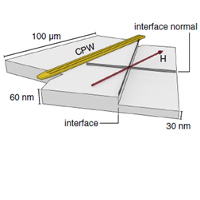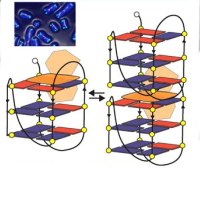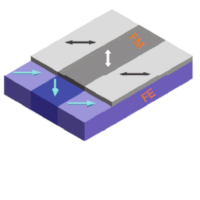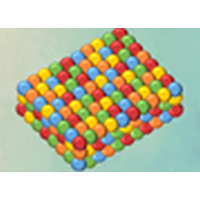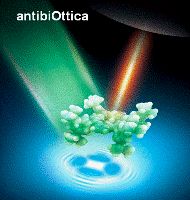Nanopatterning reconfigurable magnetic landscapes via thermally assisted scanning probe lithography
The search for novel tools to control magnetism at the nanoscale is crucial for the development of new paradigms in optics, electronics and spintronics. To date, the fabrication of magnetic nanostructures has been achieved mainly through irreversible structural or chemical modifications.
Here, we propose a new approach, based on thermally assisted magnetic scanning probe lithography (tam-SPL), for creating reconfigurable magnetic nanopatterns by crafting, at the nanoscale, the magnetic anisotropy landscape of a ferromagnetic layer exchange-coupled to an antiferromagnetic layer. By performing localized field cooling with the hot tip of a scanning probe microscope, magnetic structures, with arbitrarily oriented magnetization and tunable unidirectional anisotropy, are reversibly patterned without modifying the film chemistry and topography. This opens unforeseen possibilities for the development of novel metamaterials with finely tuned magnetic properties, such as magnonic crystals allowing active manipulation of spin waves. In this context, we present a proof-of-concept experiment, performed by micro-focused Brillouin light scattering (µ-BLS), showing that local control of the spin wave excitation and propagation can be obtained in reconfigurable magnetic tracks patterned with tam-SPL.
The panel (a) of Figure shows the investigated sample, consisting of 2.5-μm-wide tracks with alternating 0° and 90° oriented remanent magnetization. Coplanar wave guides (CPWs), oriented perpendicular to the longitudinal direction of the tam-SPL tracks, were fabricated by electron-beam lithography and liftoff. The MFM image of the pattern at remanence is presented in the panel (b), where the black arrows indicate the local direction of the static magnetization, which is parallel (perpendicular) with respect to the CPW in type A (B) tracks. Panel (c) shows the colour-coded spin wave intensity measured at remanence by m-BLS, in the 3–5 GHz frequency range, as a function of the x position along the CPW arms. Remarkably, propagating spin waves are efficiently excited only in type A tracks, whereas the spin waves’ excitation efficiency is strongly reduced in type B tracks. Finally, the panel (d) shows the colour-coded spin wave intensity acquired at remanence as a function of distance y from the CPW, in the centre of two adjacent tracks. We found that spin waves attenuate rapidly in the type B track, while in the type A track they efficiently propagate.

Principal publication and authors
E. Albisetti, D. Petti, M. Pancaldi, M. Madami, S. Tacchi, J. Curtis, W. P. King, A. Papp, G. Csaba, W. Porod, P. Vavassori, E. Riedo, and R. Bertacco, Nature Nanotechnology 2016, doi:10.1038/nnano.2016.25
